3 minutes to learn flower arrangement skills
Flower arrangement art works must have a concept and a shape, and composition is the first element of the shape. The basic rule of artistic flower arrangement composition is the balance of diversity, unity and asymmetry. The various forms of flowers, leaves, branches and fruits in nature create conditions for diversity and change for each flower arrangement work.
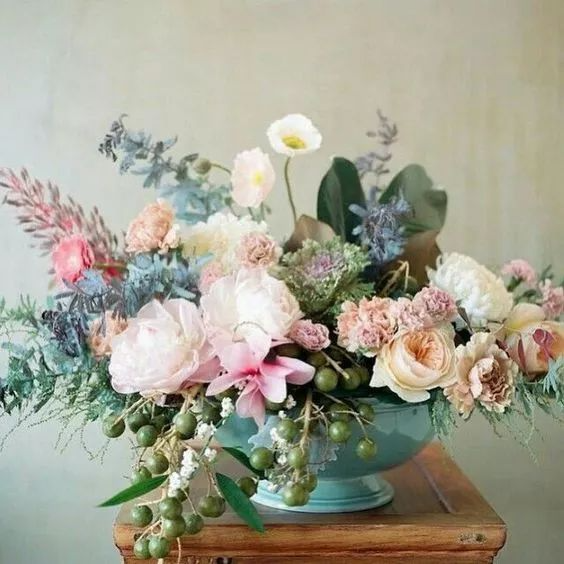
This change is carried out under the premise of unity. Without unity, it will appear loose and messy; on the contrary, if there is only unity but no change, it will appear monotonous and stereotyped. Only with diversity and unity can we achieve an artistic effect that originates from nature and transcends nature.
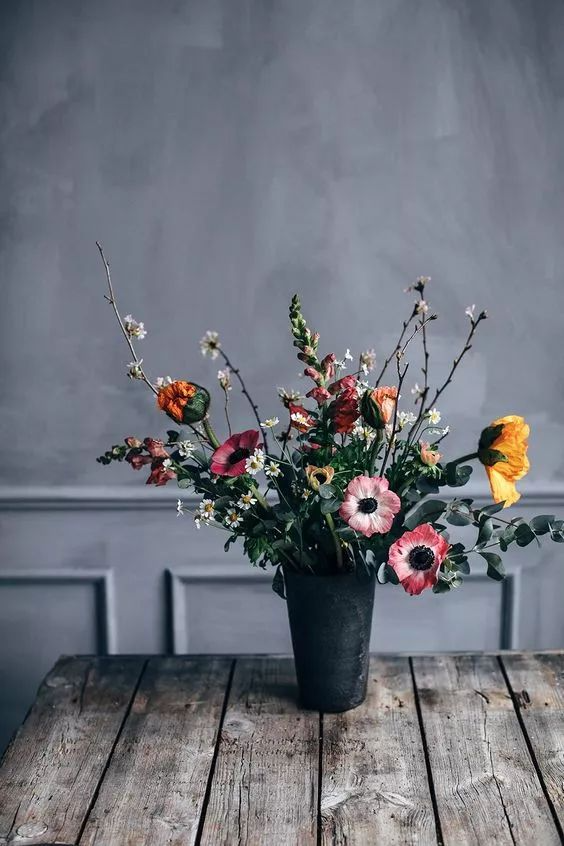
Artistic flower arrangement rarely adopts a symmetrical form, because symmetry appears mechanical, unnatural, and too decorative. Flower arrangement advocates nature, and avoids "stable" and "bland" composition. Instead, it seeks balance in asymmetry and strives to "be surprising in stability", giving people a natural and stable feeling. In the art of flower arrangement, to master the balance of diversity, unity and asymmetry, it is necessary to arrange the height, distance, weight, size, elevation, depth, density, and reality of the plant materials appropriately.
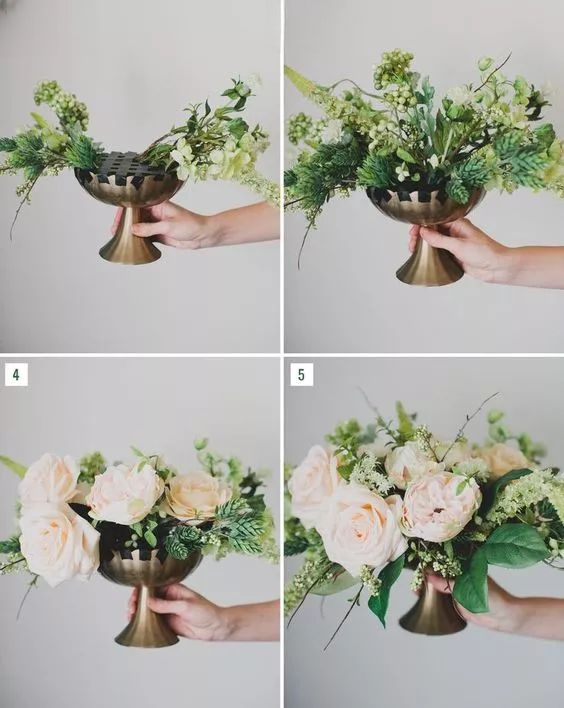
Generally speaking, the following points should be mastered when matching various materials:
①Staggered height: the positions of the flowers should be staggered, and they should never be placed on the same horizontal or straight line.
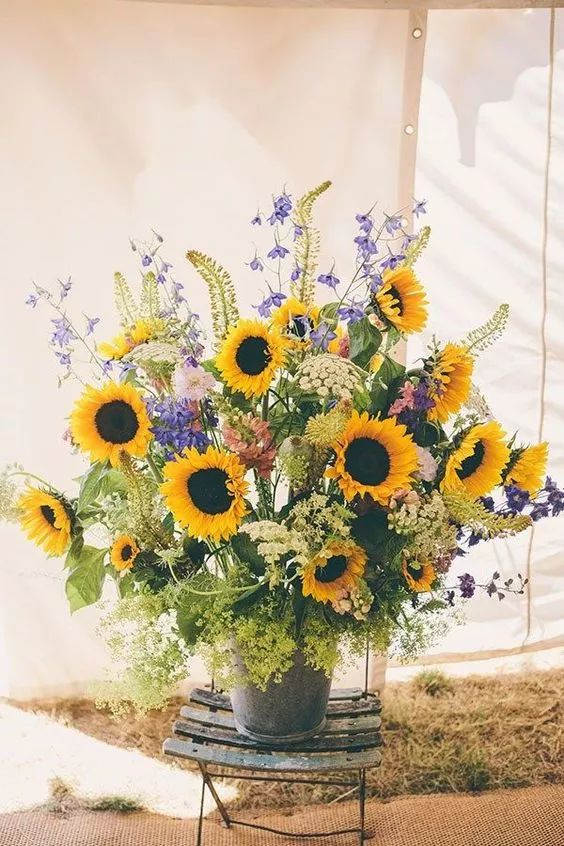
② Well-balanced density: Every flower and leaf should have its ornamental or compositional effect. Too dense will appear too complicated, while too sparse will appear empty.

③ Combination of the real and the virtual: flowers are real and leaves are virtual. Flowers without leaves lack contrast, while leaves without flowers lack substance.
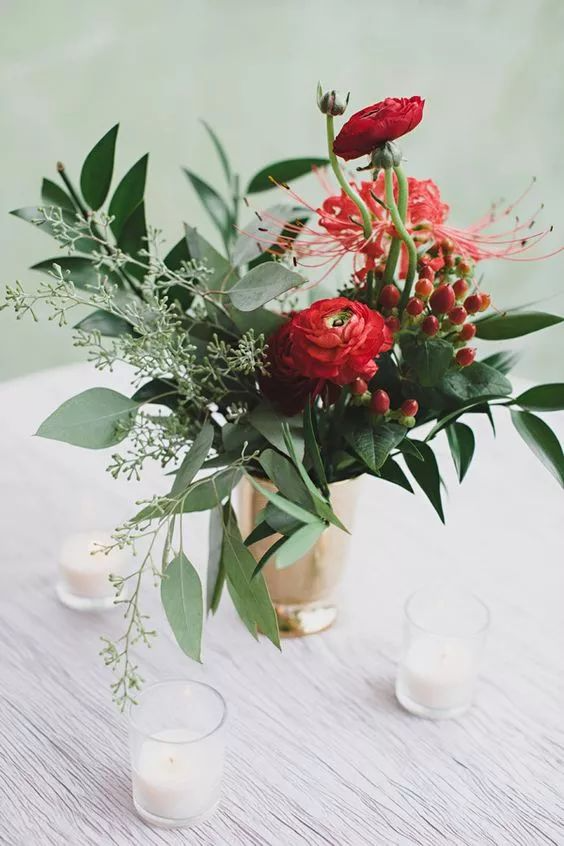
④ Echoes in ups and downs: that is, the flowers and branches above, below, left and right should look back and forth around the center and echo each other, which not only reflects the integrity of the work, but also maintains the sense of balance of the work.
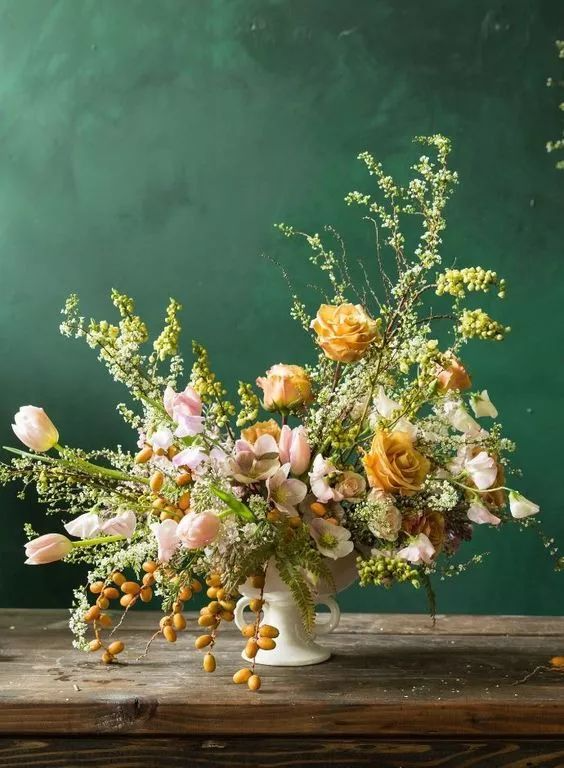
⑤ Light on top and heavy on bottom: that is, the flower buds are on top and the full flowers are on the bottom; the light colors are on top and the dark colors are on the bottom, which appears balanced and natural.
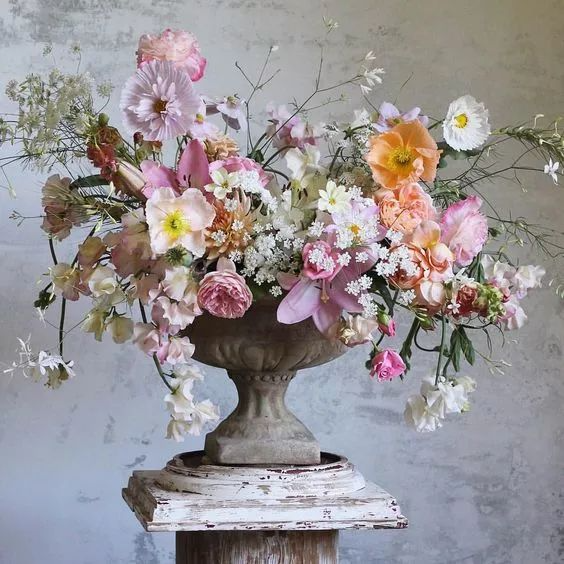
⑥ Scattered on top and gathered on the bottom: that is, the flowers, branches and leaves should be gathered together at the base as if they were born from the same root; the upper part should be sparse and varied.
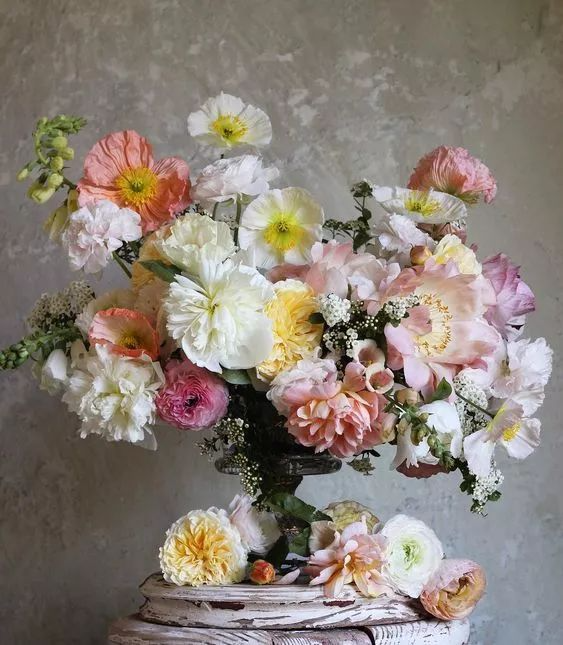
Clamp fixation method
When inserting flower branches into a vase, they may move or become out of place. There are two ways to solve this problem.
One is to use the horizontal branch clamping method, cut a small hole vertically at the end of the branch used as the flower arrangement material, clamp a small branch, and insert the flower branch and the small branch into the vase in a cross shape. The second is to use the vertical branch clamping method, the clamped branch is vertical, and the attached branch should be determined according to the depth of the vase. The upper part of the attached branch can only be used to tie the flower branch, and it does not need to be too long. The length of the other end should be enough to reach the bottom of the vase.
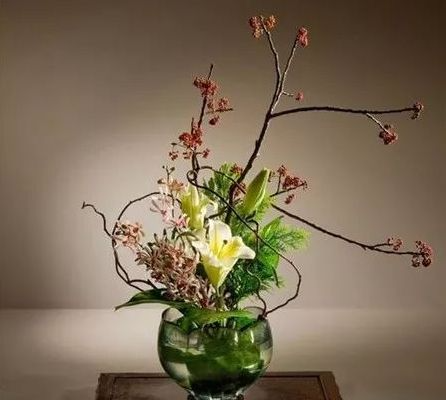
Branch fixing method
Harder branches are not easy to bend, such as loquat and pine. Some flowers have defects in shape or are not easy to fix, and are not suitable for binding with wire. At this time, the branch breaking and fixing method can be used.
The branch fixing method, as the name suggests, is to break a certain part of the flower branch, but it is best not to break it and have a little elasticity. If the branch still bounces back to its original position after being broken, you can put a small stone or a small piece of wood at the fold to prevent it from resetting.
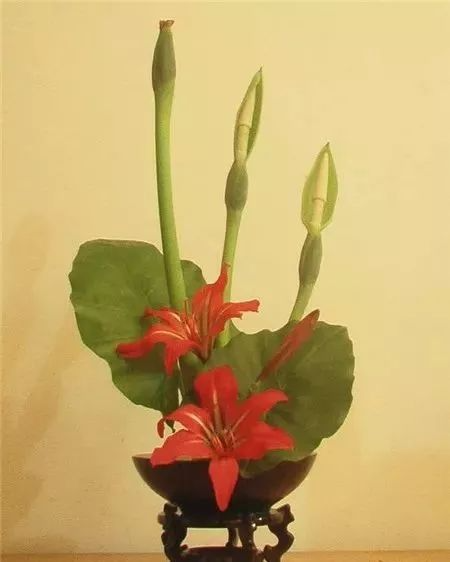
Incisional fixation
Generally, the incision is made at the base, and several cuts are made longitudinally at the incision so that the flower branch can be smoothly inserted into the vase seat. This not only facilitates the fixation of the flower branch, but also expands the wound surface to facilitate the flower branch to absorb water.
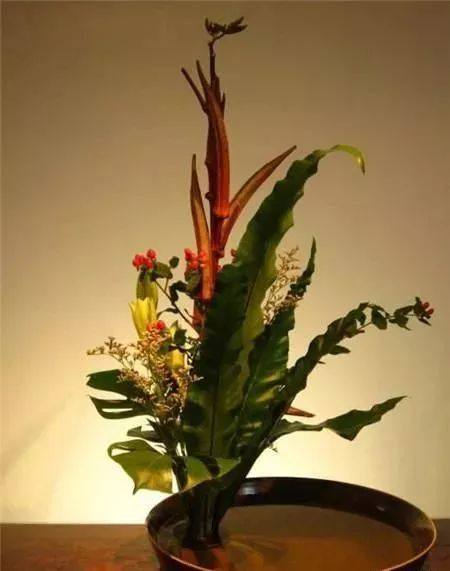
Flower socket joint method
The size of flower sockets is very limited, and sometimes several flower sockets are needed to make a large flower arrangement. At this time, you can use small branches to nail them horizontally, so that you can insert more flowers and strengthen the base.
Flower plug inverted method
When arranging flowers, you may encounter a situation where the flower branches are heavy and the flower sockets are light, causing them to fall over. At this time, you can turn the flower socket upside down on one side to increase the gravity.
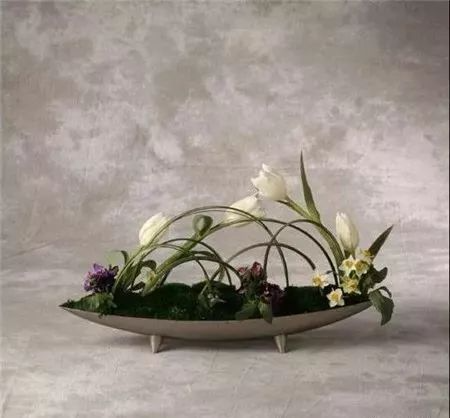
By mastering these methods, you can make your flower arrangement both rhythmic and stable, and achieve balance in movement.